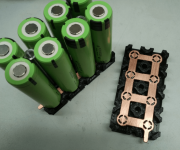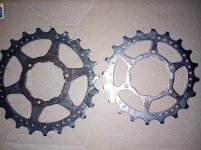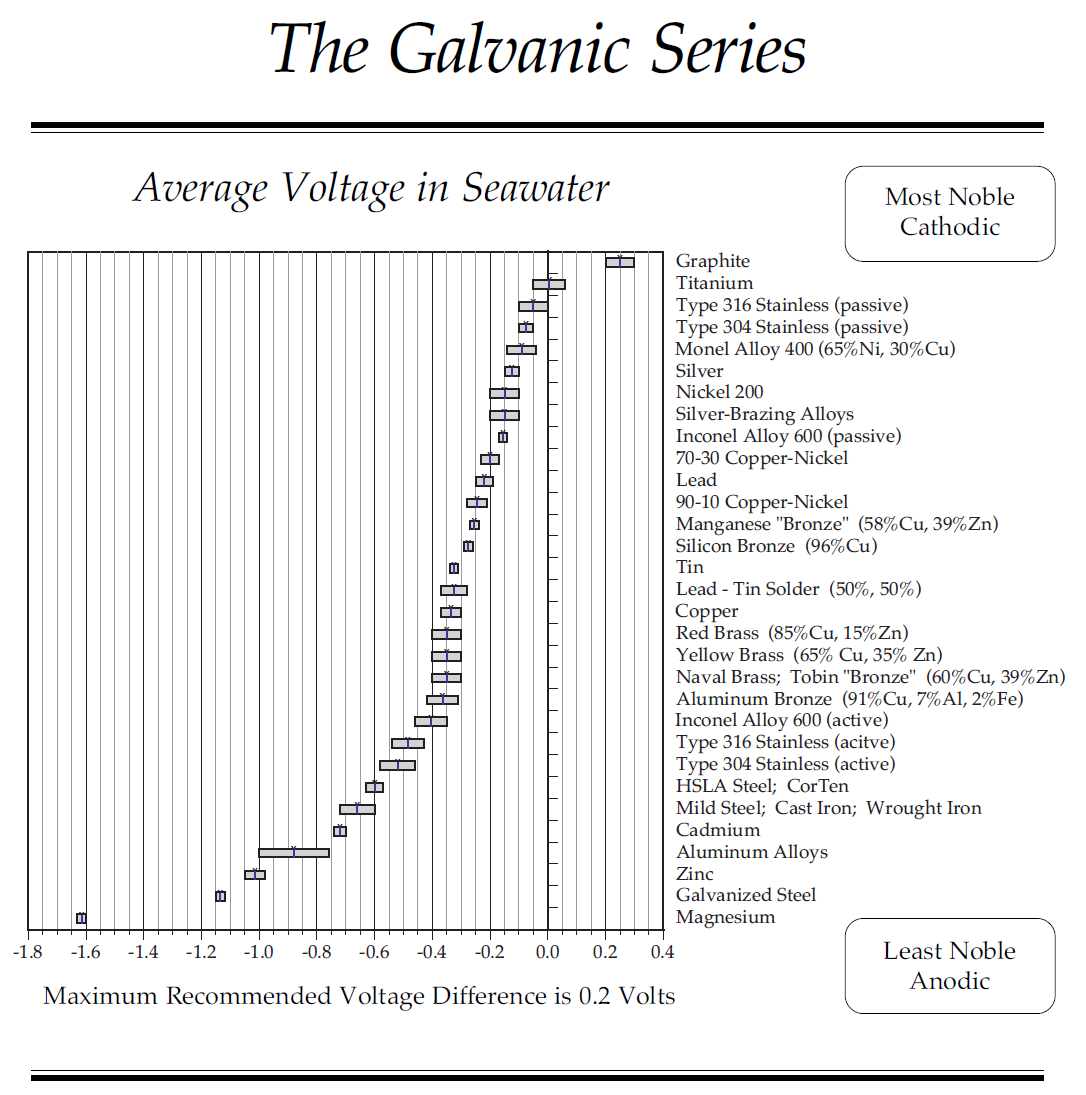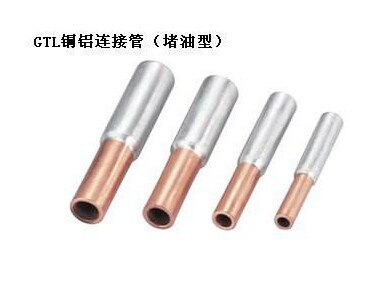edit: the plating material of choice for me now is...Nickel. Also, in places where you want a weight savings, cost savings, and can tolerate a thicker mass of material for the same current-carrying ability as a certain dimension component of copper, aluminum busses are apparently a worthwhile material (see below). I have seen many examples of nickel-plated copper, but not yet any Ni-plated Al.
xxxxxxxxxxxxxxxxxxxx
This last year, I have become interested in using copper (or even brass) as bus-plates or at the very least, for the series connections between paralleled sub-packs at a minimum. The parallel connections between 4 cells in a 4P sub-pack will only need to carry the balancing current after a bulk-charge, so it would be much less than one amp, and that connection can be very thin. There is no issue using solid nickel strips in that application.
View attachment 2
But, for the series, it has to carry the full pack current, divided by the number of series connections between each P-group. The standard nickel "ladder" shaped ribbons that accomplish both parallel and series have one strip connecting every cell to each neighboring cell. For a 4P rectangular pack, there are four nickel ribbons connecting each P-group to the next one. If this is for a 40A pack, then each one of those ribbons have to carry a 10A occasional peak (10A per cell is common these days). Pure nickel isn't horrible for this, but...it's also not good.
View attachment 1
The pic above uses solder to connect a thin fuse-wire to the cell. I'm just including that pic to show the parallel connections can be small, and for performance, the series connection can be thick copper.
It only becomes an issue for very high-amp packs. If we look at what E-motorcycles are doing (with 300A systems, etc) they use copper flat bars that are pretty fat. Because there are so many issues with attaching the series connection directly across each cell, I am now a fan of configuring one series-bar across every two cells, which connect to the middle between two cells in the next P-group.
Regardless of pack-designing configurations, there is a growing interest in using copper for series connections. Its cheap and readily available. If you live in a dry climate, you will likely not be concerned about corrosion on the copper. This is the major benefit of using nickel in the common bus-strips, it is corrosion-resistant, and it spot-welds very fast and easy on an assembly line. As far as electrical performance its conductivity is about 25/100 compared to copper at 100/100. Plus, nickel is projected to become very expensive in 2018 if current trends continue.
If you don't want to use a plated part, but...you do want to have an electrical connection that is more conductive than nickel, but physically stiffer and more corrosion-resistant than copper...consider brass/red brass. it occupies a middle ground between pure nickel and pure copper. It is also cheap and readily available. Brass is made of copper with some zinc mixed-into it, and red brass has a little less zinc and more % of copper. Here are the electrical conductivity ratings (approximate, actual values will vary by purity and also the reporting website)
100__copper
61__aluminum
37__red brass
28__yellow brass (common brass)
27__zinc
22__nickel
15__tin
However, if you ARE concerned about corrosion on copper bus-bars (in the salty air near the beach), or...you want to make a product to sell to the public (which appreciates the good look and acceptable performance of a plated part), I thought this would be a great place to share any info on how to make plating as easy and cheap as possible.
Tesla uses thick copper busses that are nickel-plated (also high end cordless tools). Nickel, tin, and zinc all have a poor amount of conductivity (about 1/4th of copper), but...as long as its only a thin plating, the added resistance is negligible. I am interested in a DIY plating over copper...of zinc, tin, or a tin/zinc alloy for corrosion-resistance, and also to make the products look professional (zinc/tin alloy should be about the same conductivity as nickel).
Here's an awesome video showing a guy electroplating a steel part with a tin/zinc alloy in his garage, which polished-up at the end to a finish that is almost chrome-like. Electroplating only takes 3V plus a few chemicals, and it is easy and cheap.
https://www.youtube.com/watch?v=4c7Sw0BiPAo
[youtube]4c7Sw0BiPAo[/youtube]
As nice as this result is, I have also recently seen some "electroless" plated parts that looks very nice. I have known about "hot dipped" roofing-nails for quite some time. That is the cheapest way to coat steel roofing nails with zinc (and zinc is plentiful and cheap). The coating on those is dull and ugly, but it clearly works. I recently saw some electroless galvanized roofing nails that had a beautiful finish, so I know it is possible.
There's nothing wrong with DIY nickel-plating, so I welcome any info on that in this thread. However, I am most interested in DIY plating of copper with zinc, or a zinc/tin alloy...whether it is electro-plating, or electroless.
Below is a recent ES example of copper busses that would benefit from plating.

xxxxxxxxxxxxxxxxxxxx
This last year, I have become interested in using copper (or even brass) as bus-plates or at the very least, for the series connections between paralleled sub-packs at a minimum. The parallel connections between 4 cells in a 4P sub-pack will only need to carry the balancing current after a bulk-charge, so it would be much less than one amp, and that connection can be very thin. There is no issue using solid nickel strips in that application.
View attachment 2
But, for the series, it has to carry the full pack current, divided by the number of series connections between each P-group. The standard nickel "ladder" shaped ribbons that accomplish both parallel and series have one strip connecting every cell to each neighboring cell. For a 4P rectangular pack, there are four nickel ribbons connecting each P-group to the next one. If this is for a 40A pack, then each one of those ribbons have to carry a 10A occasional peak (10A per cell is common these days). Pure nickel isn't horrible for this, but...it's also not good.
View attachment 1
The pic above uses solder to connect a thin fuse-wire to the cell. I'm just including that pic to show the parallel connections can be small, and for performance, the series connection can be thick copper.
It only becomes an issue for very high-amp packs. If we look at what E-motorcycles are doing (with 300A systems, etc) they use copper flat bars that are pretty fat. Because there are so many issues with attaching the series connection directly across each cell, I am now a fan of configuring one series-bar across every two cells, which connect to the middle between two cells in the next P-group.
Regardless of pack-designing configurations, there is a growing interest in using copper for series connections. Its cheap and readily available. If you live in a dry climate, you will likely not be concerned about corrosion on the copper. This is the major benefit of using nickel in the common bus-strips, it is corrosion-resistant, and it spot-welds very fast and easy on an assembly line. As far as electrical performance its conductivity is about 25/100 compared to copper at 100/100. Plus, nickel is projected to become very expensive in 2018 if current trends continue.
If you don't want to use a plated part, but...you do want to have an electrical connection that is more conductive than nickel, but physically stiffer and more corrosion-resistant than copper...consider brass/red brass. it occupies a middle ground between pure nickel and pure copper. It is also cheap and readily available. Brass is made of copper with some zinc mixed-into it, and red brass has a little less zinc and more % of copper. Here are the electrical conductivity ratings (approximate, actual values will vary by purity and also the reporting website)
100__copper
61__aluminum
37__red brass
28__yellow brass (common brass)
27__zinc
22__nickel
15__tin
However, if you ARE concerned about corrosion on copper bus-bars (in the salty air near the beach), or...you want to make a product to sell to the public (which appreciates the good look and acceptable performance of a plated part), I thought this would be a great place to share any info on how to make plating as easy and cheap as possible.
Tesla uses thick copper busses that are nickel-plated (also high end cordless tools). Nickel, tin, and zinc all have a poor amount of conductivity (about 1/4th of copper), but...as long as its only a thin plating, the added resistance is negligible. I am interested in a DIY plating over copper...of zinc, tin, or a tin/zinc alloy for corrosion-resistance, and also to make the products look professional (zinc/tin alloy should be about the same conductivity as nickel).
Here's an awesome video showing a guy electroplating a steel part with a tin/zinc alloy in his garage, which polished-up at the end to a finish that is almost chrome-like. Electroplating only takes 3V plus a few chemicals, and it is easy and cheap.
https://www.youtube.com/watch?v=4c7Sw0BiPAo
[youtube]4c7Sw0BiPAo[/youtube]
As nice as this result is, I have also recently seen some "electroless" plated parts that looks very nice. I have known about "hot dipped" roofing-nails for quite some time. That is the cheapest way to coat steel roofing nails with zinc (and zinc is plentiful and cheap). The coating on those is dull and ugly, but it clearly works. I recently saw some electroless galvanized roofing nails that had a beautiful finish, so I know it is possible.
There's nothing wrong with DIY nickel-plating, so I welcome any info on that in this thread. However, I am most interested in DIY plating of copper with zinc, or a zinc/tin alloy...whether it is electro-plating, or electroless.
Below is a recent ES example of copper busses that would benefit from plating.







